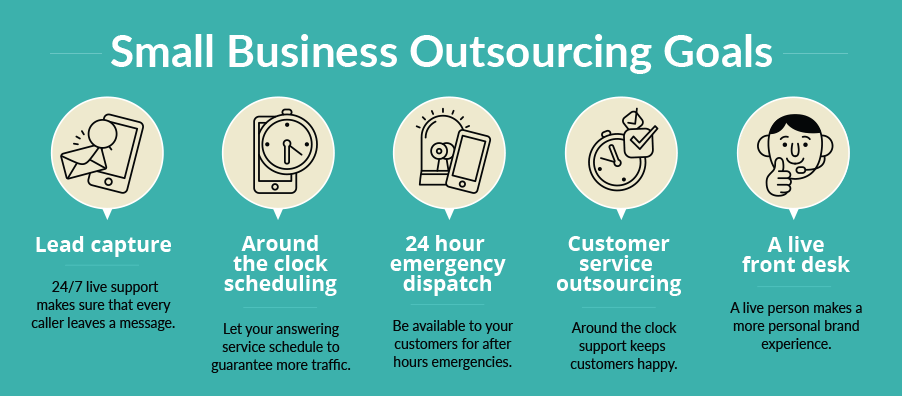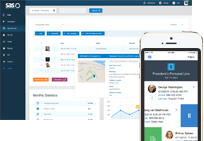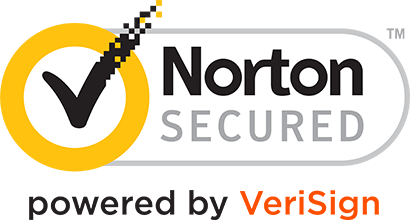- Log In
- Support
- Company
- Contact Us
- Live answers @ 1-888-532-4794
8 Pieces of Answering Service Advice You Wish You Knew
It’s National Small Business Month and your phone is probably ringing off the hook! To celebrate, and to make sure you’re not missing out on any potential opportunities, we wanted to highlight how answering services are a great tool for small businesses. We asked our staff to share their advice about answering services for small business owners. We sifted through tons of amazing advice and picked out some of the best ideas.
1. “You don’t know how many calls you’re missing until you’re not missing them anymore.”
When small businesses are starting out, they typically let their voicemail answer calls when they’re too busy or they’re out of the office. However, the number of people that leave messages will never equal the number of people who called. Did you know that 7 out of 10 people are simply going to hang up instead of leaving a message? So, while you think you may only be missing a handful of calls based off the amount of messages you have, the truth is you’re missing a lot more.
When businesses start answering their calls 24 hours a day, they realize just how much activity they missed out on before. Even for small businesses that don’t get a lot of calls to begin with, every single interaction counts, and missing those opportunities is not something any business owner should risk.
2. “Start off with the simplest script, then add, test, evaluate, and repeat.”
For any first-time answering service user, it can be easy to go overboard with your script. Your first thought is that you’ll want to be able to account for all types of scenarios as you would in your own office. Unfortunately, that’s where things get a bit hairy. While it’s important to plan ahead and prepare for different call scenarios, you’ll want to start off with as simple a script as possible and work your way towards more complicated protocols.
Every answering service is different. Some may handle lead capture well and falter on emergency dispatch. Others may dispatch well but the operators may sound robotic. Once you get a good feel for how the reps are handling your calls at the most basic level, you can start to sprinkle in some more complicated processes like appointment scheduling, call transfers, and reach on call procedures.
Pro tip: Any time you add complexity to your script, remember to test out the functionality before going live with your customers. Once you’re confident the operators have a good grasp, you can release the hounds!
3. “Know what your goals are before getting an answering service.”
Before you hire an answering service, you need to understand your goals. Once you know what aspect of your business you’d like the answering service to help with, you can develop your script and protocols accordingly. Following are some basic goals and how the answering service can help:
- Lead capture: 24/7 live support makes sure that most every caller will leave a message.
- Around the clock appointment setting: Let your answering service schedule appointments to guarantee more traffic.
- 24 hour emergency dispatch: Be available to your customers for after hours emergencies.
- Customer service outsourcing: Around the clock support keeps customers happy.
- A live front desk: A live person makes a more personal brand experience.
4. “Trust that we know what’s going to work, and what isn’t.”
You know a lot about your business, and the answering service rep you’re working with is going to know a lot about what works (and what won’t) in an answering service environment. Whatever your initial ideas of what you want the answering service to handle on your behalf may not always be feasible. When outsourcing, it’s important to remember that the agents handling your calls are also answering calls for hundreds of other businesses, so it’s near impossible for them to know as much about your company as someone in your own office. During initial setup, if the answering service rep you’re working with expresses concerns that some of the protocols you want followed won’t work, they probably won’t.
The best outsourcing experiences are ones where the answering service gathers the most basic information, then transfers the call to your staff who handles the heavy lifting like closing sales and answering complex questions.
5. “Know the system you’re working with and activate any value-adding features accordingly.”
Whichever provider you’ve selected to answer your calls, be sure to explore other free features they may offer customers. For example, your answering service may offer free voicemail services or free integrations with software you’re already using. If you’re an SAS customer, we offer a wide range of features that come complimentary with our service like:
- Call ratings
- Appointment scheduling
- Downloadable reports
- On-call dispatching
- Customer surveys
- App integrations
6. “Customer comments don’t always show the full picture. Run a report, contact customer service, or listen to the call to see what really happened.”
The customer isn’t always right, but that doesn’t mean they should be ignored. For example, some customers may report 30 minute hold times, which in reality may be 30 seconds. Others may contact you about rude operators, who in reality were nothing as described. As soon as you are aware of an issue, contact the answering service immediately and let them dig into the situation. If what the caller described was incorrect, you can address it with them however you see fit. However, if what the caller described was correct and your answering service dropped the ball, you are able to provide them with a great opportunity to fix whatever’s wrong.
7. “Remember, we’re the receptionist.”
It’s important not to overload your virtual receptionists with too many tasks, or expect that they will be able to handle everything thrown their way. Keeping things complicated means your callers won’t have the best customer service experience possible. Some examples of things you should second guess includes:
- Saying your company name: Unless your company name is super simple, you shouldn’t expect your virtual receptionists to pronounce it correctly 100% of the time. We recommend having a recorded upfront greeting that states your company name to avoid any human error and maintain a professional experience.
- Following a complex script: For the most part, your answering service script should be relatively simple. The more paths, or options, you have your operators to choose from, the more likely they are to make a mistake.
- Accessing your software: Operators shouldn’t access your software unless you have a dedicated agent that is specifically trained on your account only. Learning new systems can be difficult and time consuming, which is why it’s better for your team to handle those tasks instead of your answering service agents.
- Learn new instructions on the fly: Virtual receptionists follow programmed protocols to handle different types of calls, which means they aren’t able to follow new instructions on the fly. For example, you wouldn’t be able to call your virtual receptionists, tell them you’re expecting a call from someone specific and ask them to transfer the call to you. If those instructions aren’t programmed in, they won’t be able to do it.
8. “The best price usually doesn’t equal the best answering service.”
When it comes to pricing, it can be difficult to determine the best answering service to choose. Some people may think that an expensive answering service means it’ll be top notch, which isn’t always the case. On the other hand, an answering service that is dirt cheap is probably dirt cheap for a reason. Price is usually a function of quality, and you want to make sure you’re getting what you’re paying for. We recommend aiming for somewhere in between, where you’d be paying around $1 per minute/call. You’ll also want to look for an answering service with multiple pricing options that can scale up or down with your business. For example, Specialty Answering Service offers over 10 different pricing plans, including both per minute and per call options so that we can cater to businesses of all sizes.
Categories
- Advice (32)
- Answering Service 101 (18)
- Best Practices (10)
- Call Center Jobs (6)
- Call Center Software (20)
- Comparison (2)
- Customer Service (30)
- Funny (31)
- Holidays (19)
- Industry Hacks (19)
- Infographics (53)
- International (1)
- Medical (8)
- News (12)
- Phone Etiquette (2)
- Phones (14)
- Pricing (8)
- Quizzes (3)
- Receptionist (11)
- SAS Products (29)
- Scripting (4)
- Services (5)
- Small Business (25)
- Starting Up (7)
- Tips and Tricks (19)
- Uncategorized (1)
- Videos (19)
- Workplace (6)
Recently writen
- Call Center Script Best Practices: Advanced Script Block Tips to Optimize Your Answering Service
- January 2025 Release Notes – Adjustments to Call Details Timeline, New Scripting Updates, Live Transcription, and more!
- April 2024 Release Notes – Voicemail Greetings, Ability to Access Websites With a Username and Password, and more!
- March 2024 Release Notes – New Add-On, Settings Revamp, and more!
Follow Us
How about a demo?
We'll show you how our web portal works and answer any questions you have about SAS.
Schedule a demo








